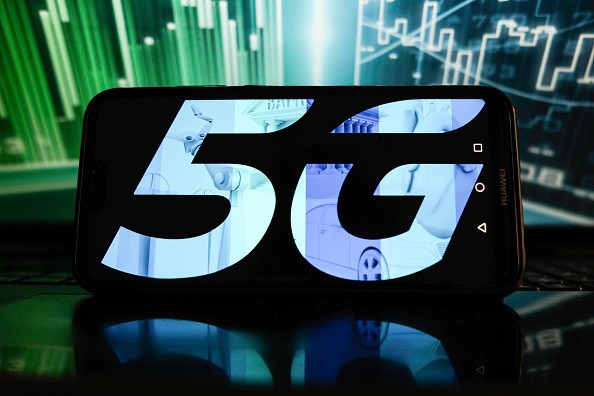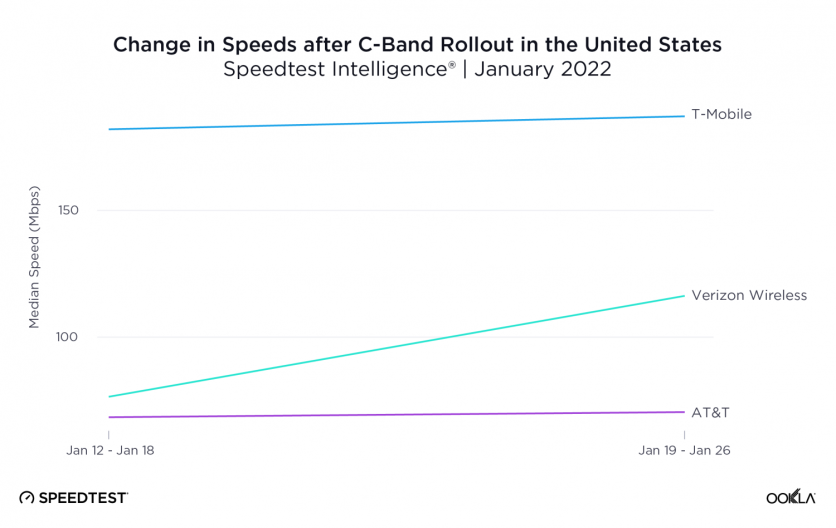
Despite fears of causing severe issues to the airline industry, 5G's C-Band rollout now nearly two weeks prior has thus settled in and has made way for a more data-fueled look into its overall endeavors. This drive, made largely by telecommunication companies such as Verizon and AT&T, to bring about the embracing of 5G was to ensure more robust systems of wireless technology.
For those unawares, 5G is essentially a beefier form of mobile networking capabilities, stringing together everything from a user's cell phone to their smart car. On the whole, it's an entirely redefined network stream that boosts the delivery speeds of higher Gbs packages as well as increases ultra low latency, capacity standards, and performance.
The surrounding pandemic has added unnecessary baggage to the burgeoning technology, with many claiming it as the very cause of the virus, but in reality 5G is merely a stepping stone that will lead us further into a future of faster, more reliable data transferring speeds and sustainable communication platforms.
But, who's the strongest player? As the Federal Communications Commission (FCC) and the Federal Aviation Administration (FAA) duke it out over necessities and airwaves, Verizon and AT&T vie to own said airwaves through a strengthening of C-band spectrum support.
On one side, Verizon sees a way of harnessing C-Band through a coverage that is wide sweeping, totalling 100 million people so says the company. On the other side of the bout is AT&T, who is now looking more toward expanding the frequency coverage and upholding a more speed-specific approach to its overall endeavors.
To put this into perspective, let's look at c-band itself. Under the 5G naming convention, c-band is simply a frequency that can range anywhere from 3.7 to 4.2 GHz. An auction held by the FCC in February of last year gave 21 varied telecommunication companies the ability to bid for well over 5,600 different C-Band US-based licenses, of which were readily picked up by the major players of Verizon ($44 billion) and AT&T ($23 billion).
Research conducted by Speedtest Intelligence shows just how this rollout leans in terms of the more powerful player in the arena. For starters, the mobile 5G downloads over the past week saw an increase of nearly 13%. Verizon's stats were the most telling in this scenario, as the company witnessed a 50% gain in performance following the C-Band rollout. With Verizon potentially adding even more C-Band spectrum deployments, the telecom company could be in the running for complete dominance of the field.

Related Article : Verizon 'Ultra Wideband' Network 5G Plans Come at the Cost of Unlimited High-Speed Hotspot Use
By many in the telecom industry, C-Band has been coined the "Goldilocks Frequency," given its myriad use cases in broadening 5G capabilities. A Lebanon, NJ rural C-Band frequency test, shared via the Verizon subreddit, showcases the incredible powerhouse of C-Band in its nearly 800 Mbps download capacity.
While good news to Verizon subscribers, even those based in rural areas, how does the C-Band equation fare for AT&T consumers? Unfortunately, AT&T didn't walk away with anything truly substantial at the FCC auction, despite blowing $22 billion at the event. The company doesn't have 5G home broadband and its C-Band markets are limited only to Orlando, Miami, Dallas-Fort Worth, Austin, Detroit, Chicago, and Jacksonville.
For AT&T, however, it's more so a waiting game as it builds upon the coverage it owns. C-Band capabilities, which the company is structuring as 5G+, "will expand rapidly as our thoughtful and efficient deployment ramps up throughout the year." AT&T recently gobbled up "40 MHz of mid-band spectrum on average nationwide in the 3.45 GHz range," which will allow it more breathing room in its 5G dominance play against Verizon.
Not every single phone has 5G capabilities, of course. Verizon and AT&T have pointed out that only Samsung's Galaxy S21, Flip 3 and Fold 3 iterations have C-Band support, as well as iPhone 12 and 13. AT&T will also have C-Band available for Google's Pixel 6 series. If on the hunt for a new device and you are unsure of the 5G capabilities it might have, make sure the phone reads as "n77" under the 5G network descriptor.
With airports now slightly less irritated, thanks largely to the new deal made between the FAA and Verizon and AT&T, the fight for 5G rests solely in the hands of its dual rivals. T-Mobile can't even seem to reach somewhat of a standing in the ring, as the company doesn't even have C-Band capabilities, nor does it really need it for the coverage it already offers. It will be interesting to see how this space evolves and where both Verizon and AT&T find themselves within the next year.
ⓒ 2025 TECHTIMES.com All rights reserved. Do not reproduce without permission.




